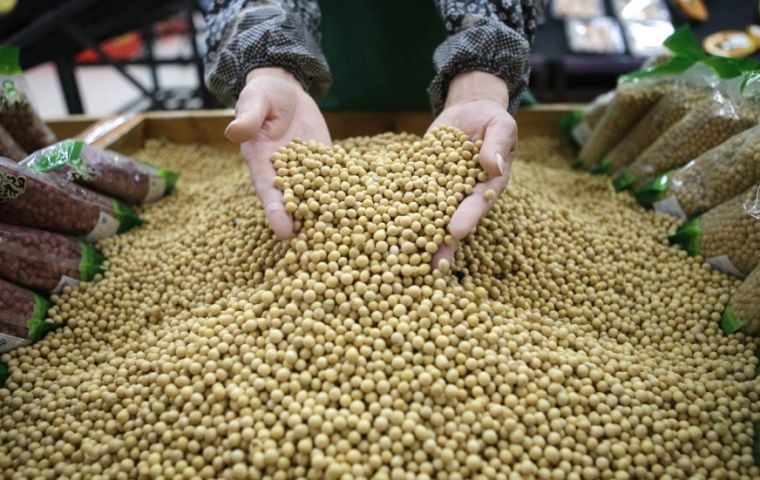MercoPress. South Atlantic News Agency
Brazilian soybeans expected to benefit from US-China trade war
 The latest estimate for the 2017-2018 Brazilian soybean crop is up to 119 million tons, compared to last year’s harvest of 114 million tons.
The latest estimate for the 2017-2018 Brazilian soybean crop is up to 119 million tons, compared to last year’s harvest of 114 million tons. The country that could indirectly benefit from the intensifying US-China trade war is Brazil, which finds itself in a strategic position to increase its market share of soybean exports to China.
China is expected to import 100 million tons of soybeans this year, up from 95 million in 2017. The US accounted for 33 million tons, or just over a third, of the 2017 total.
With US soybeans now in line for a 25% tariff, Chinese buyers are likely to shift their interest to the South American region, which accounts for nearly half of global soybean production.
The latest estimate for the 2017-2018 Brazilian soybean crop is up to 119 million tons, compared to last year’s harvest of 114 million tons. Of this 51 million tons was exported to China, up 33% up from 2016, according to US Department of Agriculture data.
The other major producer, Argentina, is not in much of a position to offer competition this year. Soybean production there has been hammered by poor weather conditions that mean its crop is expected to be the lowest in a decade.
This leaves the field open to Brazil as the main supplier of soybeans and at more competitive prices than the other options available on the market.
Meanwhile, the weakness of the Brazilian currency enhances farmers’ margins when compared with the more expensive US grains that, despite the drop in prices caused by the US-China trade dispute, are still not as attractive.
There are however question marks over how quickly Brazil will be able to react to the new trading situation in the aftermath of a truckers strike protesting high fuel costs that halted transport of cargoes to ports for more than two weeks.
Shipping sources said that regular loadings of cargoes at most ports weren’t impacted in the short term as the grains being sold were old crops stored in silos located near the port facilities.
“We are not sure what will happen if we see another strike,” said one shipping source, adding that it is unclear how much volume is left in storage.
“If they don’t sort out the internal issue they have with the truck drivers this will set back the sales which are already behind from last year,” the source added.




Top Comments
Disclaimer & comment rulesCommenting for this story is now closed.
If you have a Facebook account, become a fan and comment on our Facebook Page!